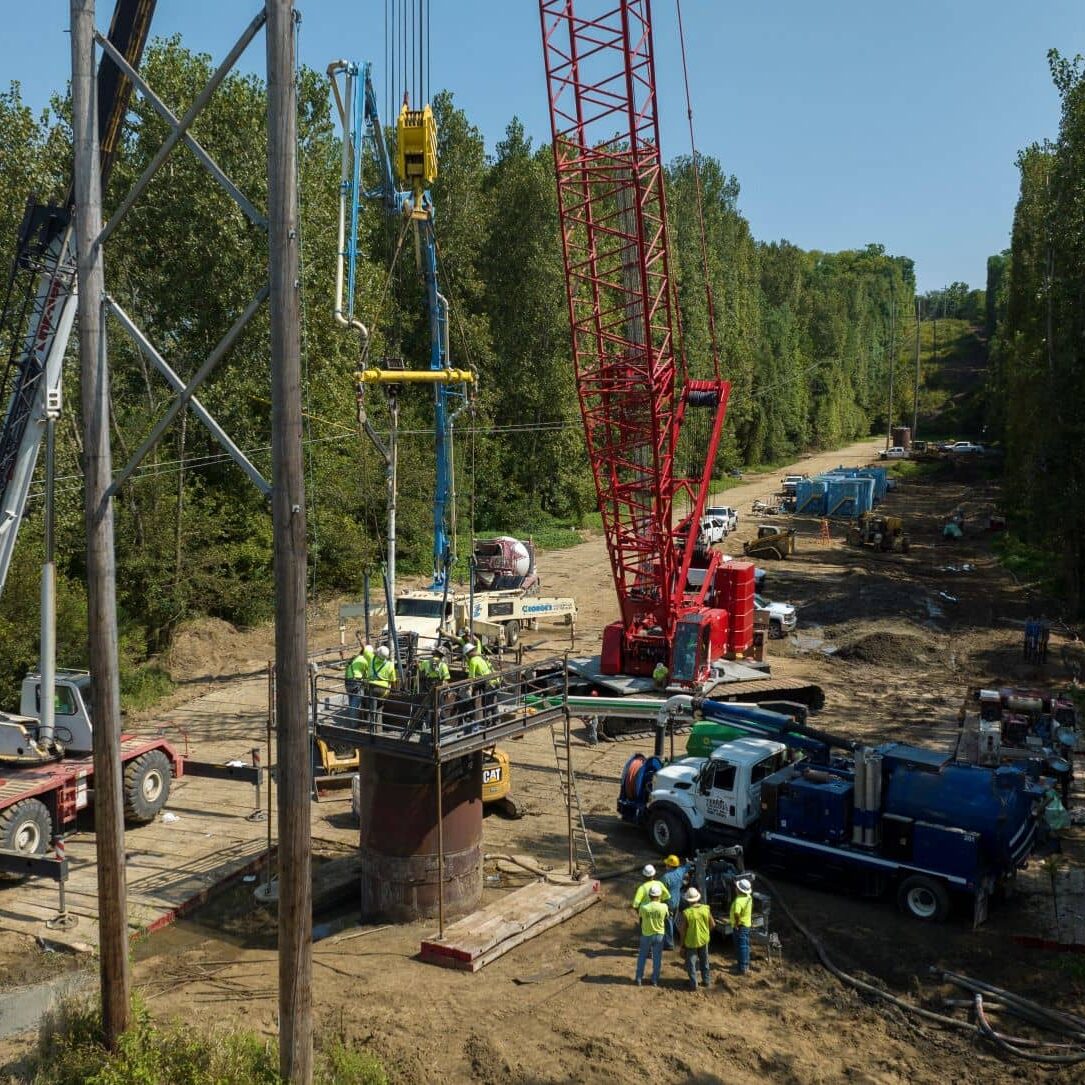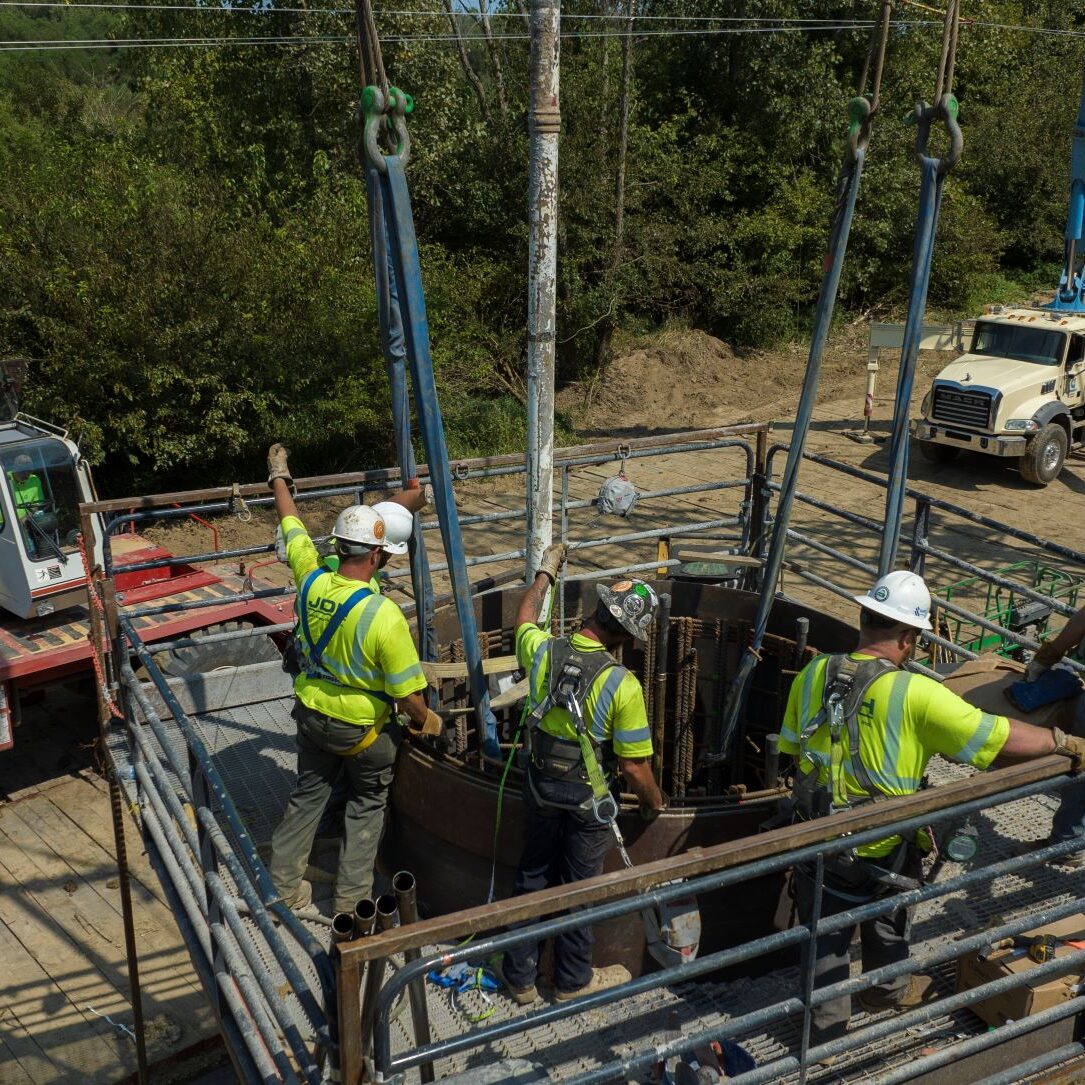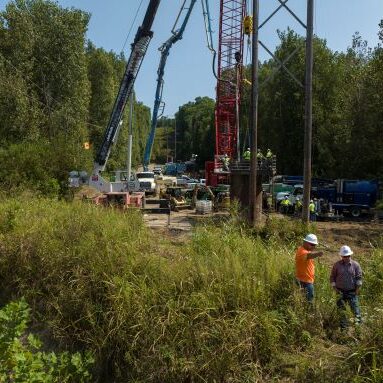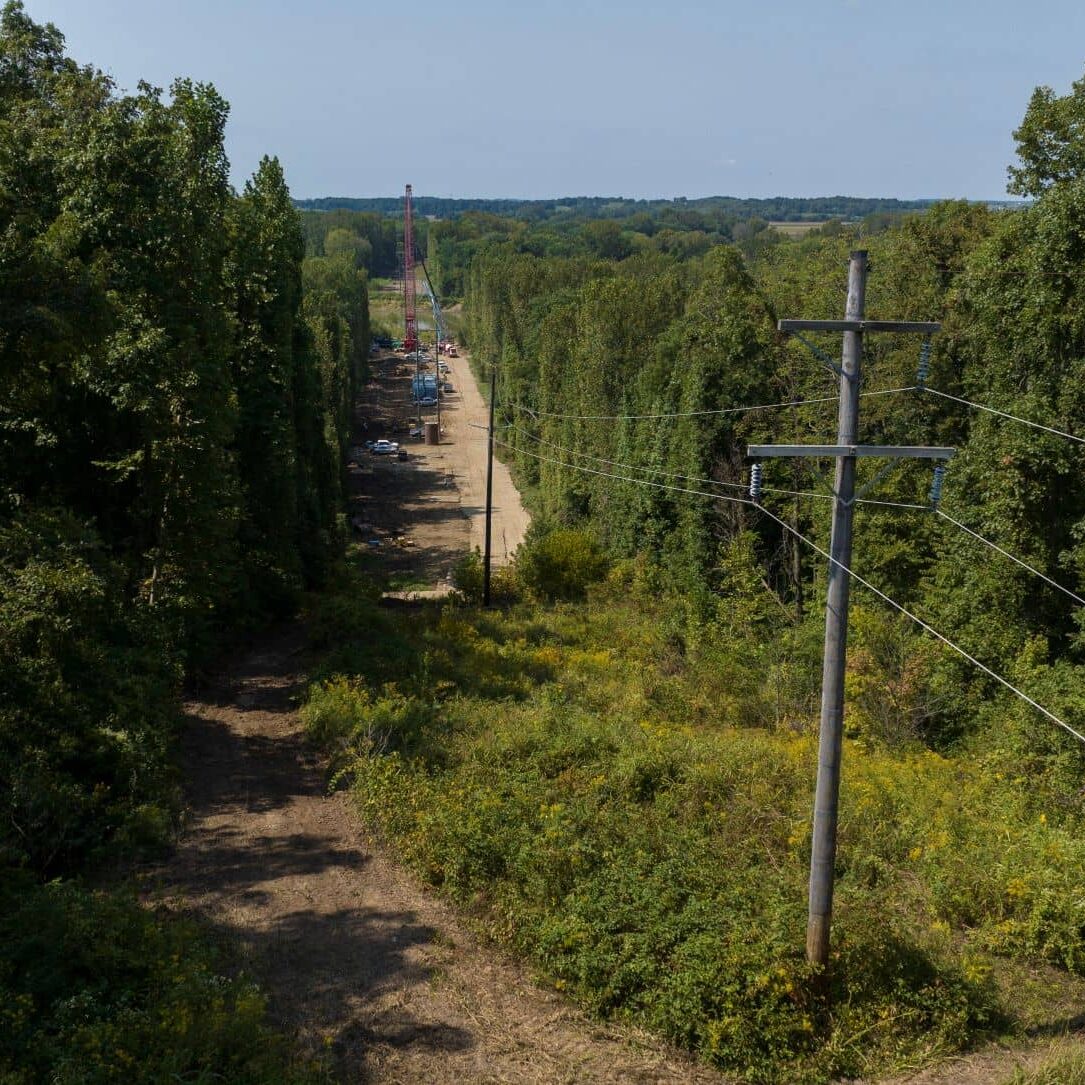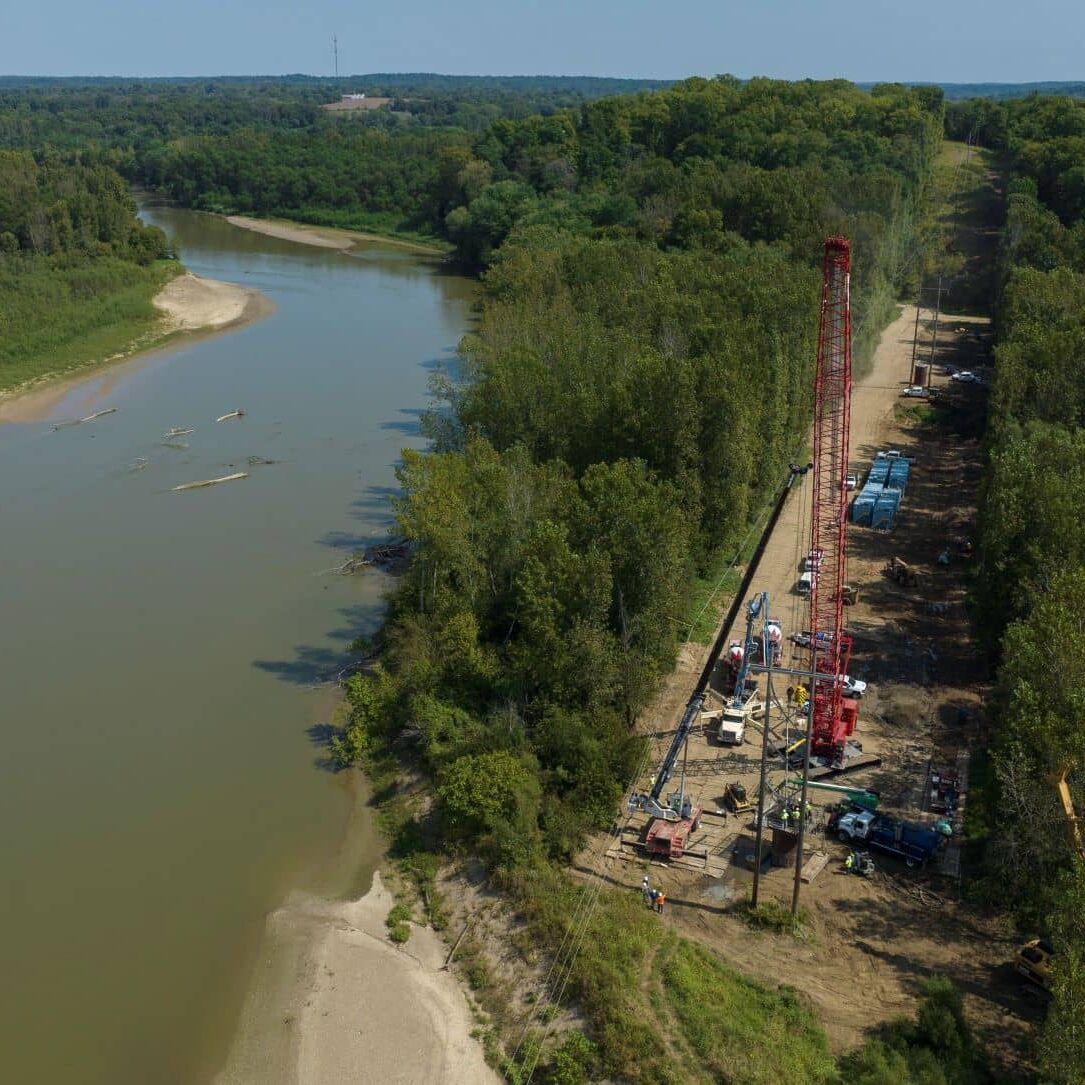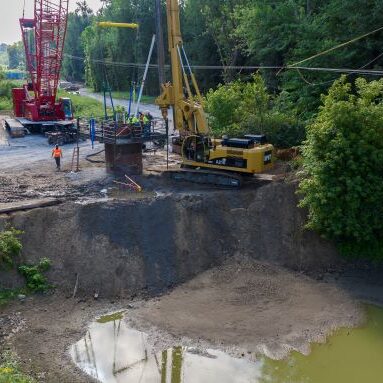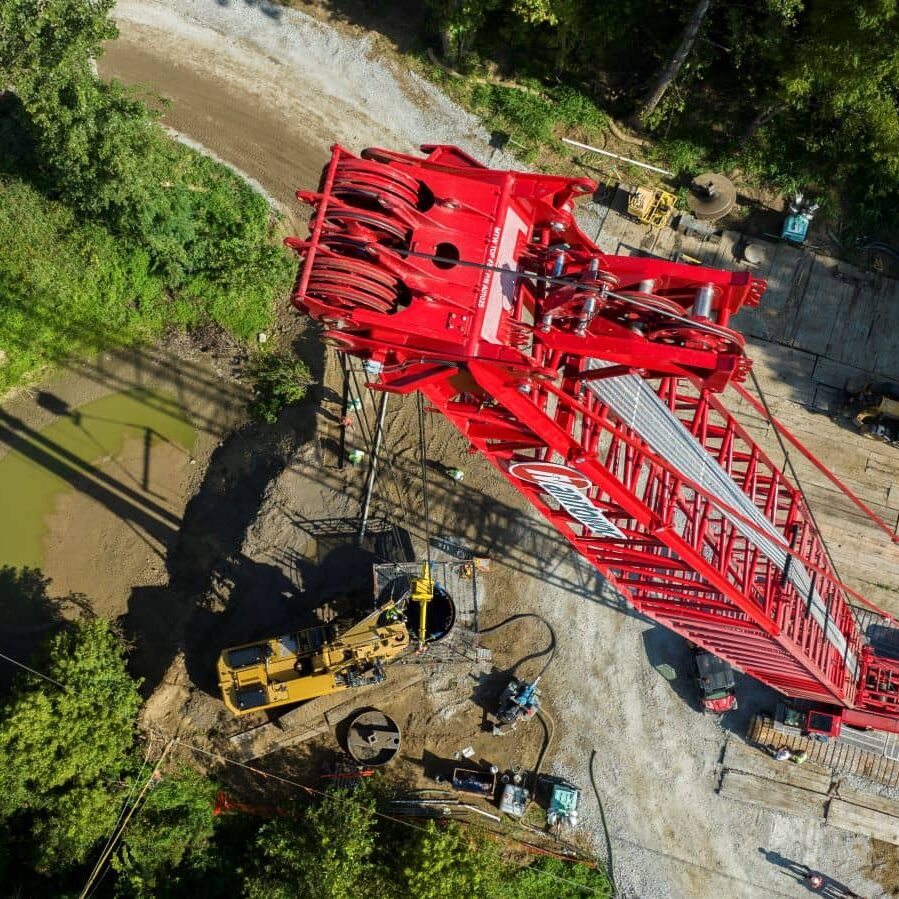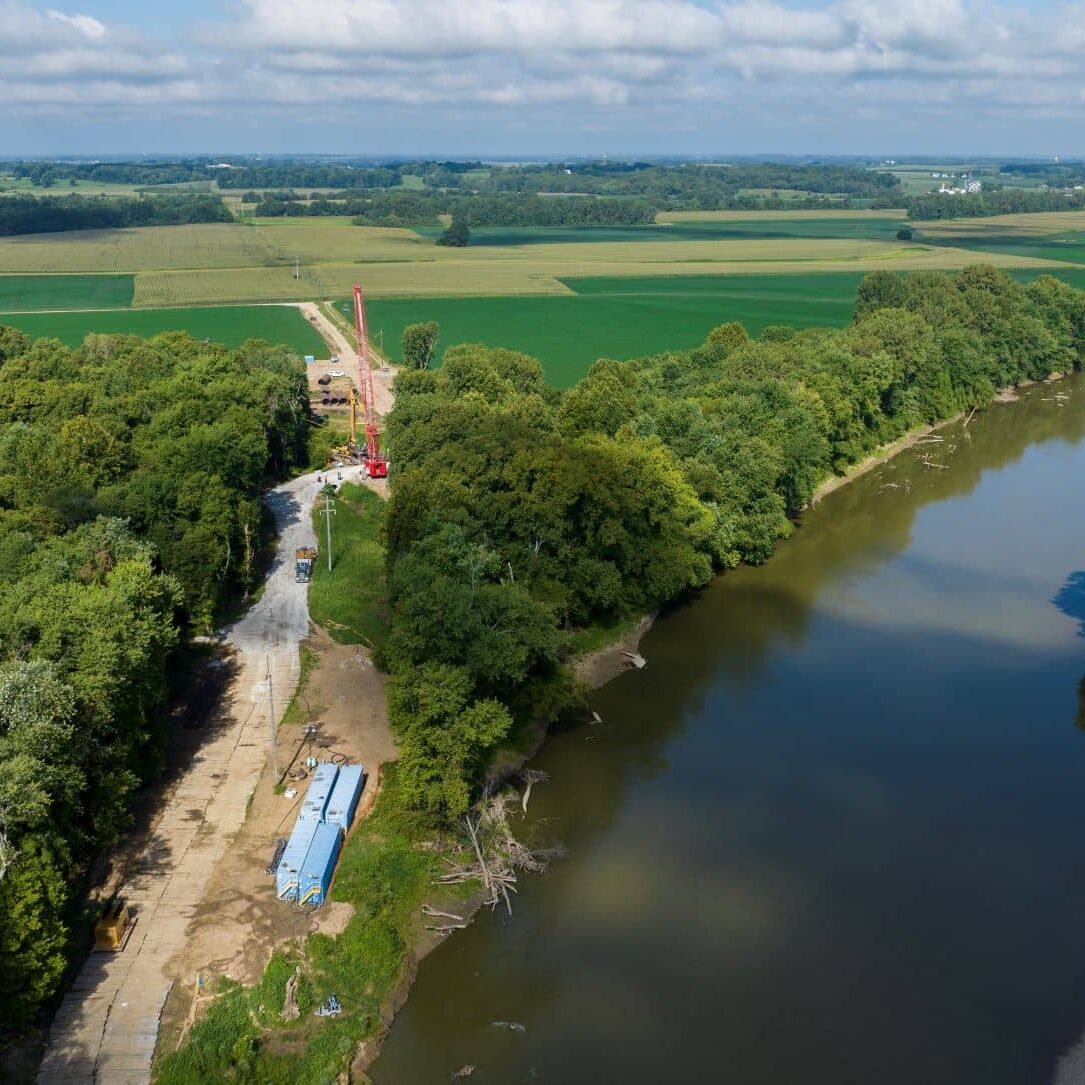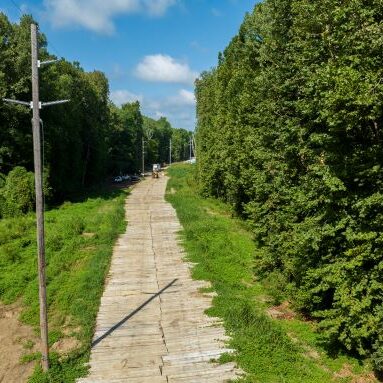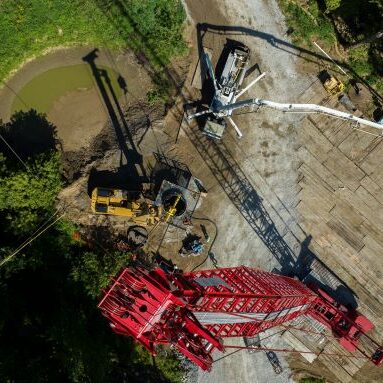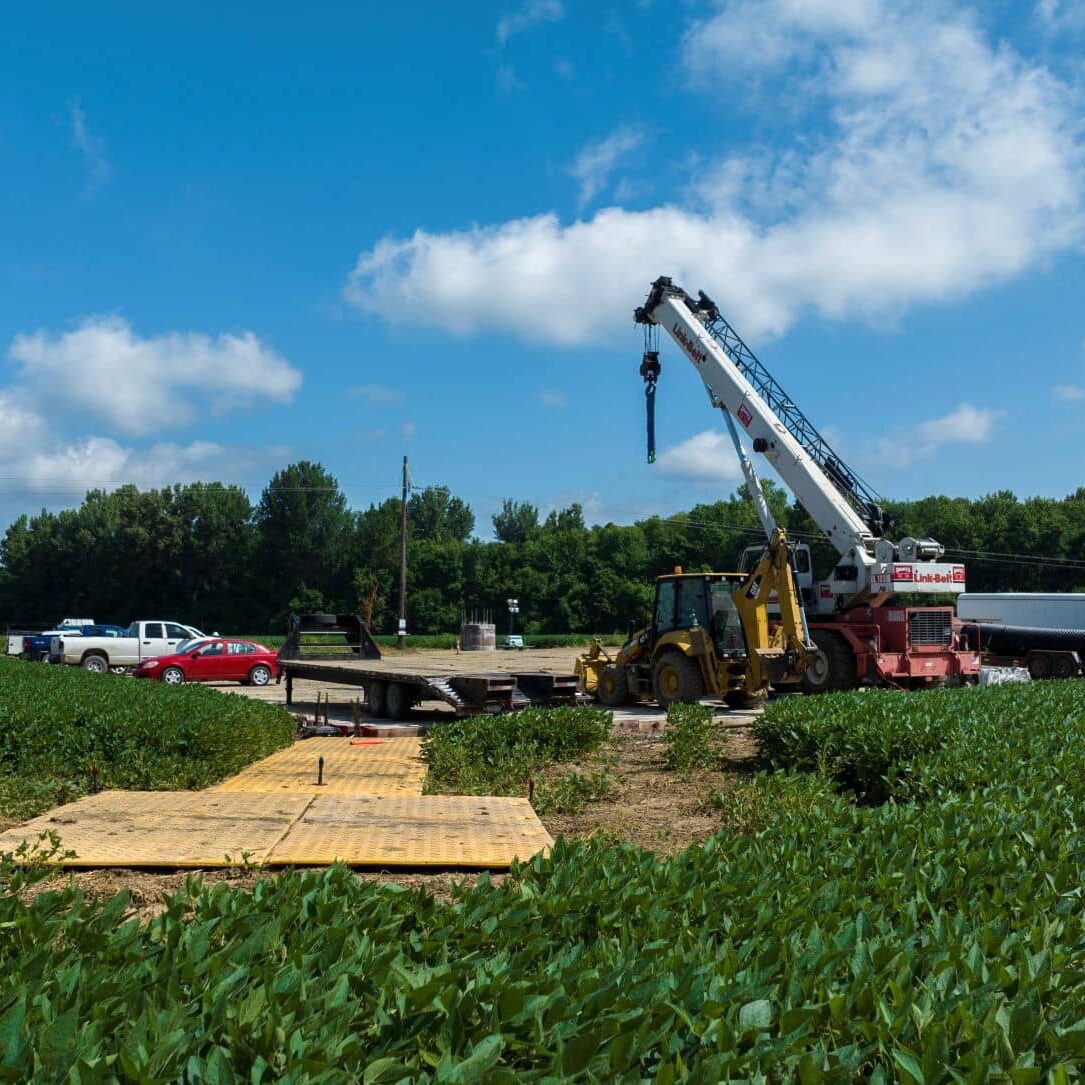There are projects, and then there is the Bloomfield River Washout Project.
Hoosier Energy recently wrapped up Phase I of one of the most daunting projects in recent memory. Others may cost more or take longer, but few match the complications involved in solving the kind of problem only Mother Nature can create.
Straddling the White River in Greene County, just southwest of Bloomfield, is a three-quarter mile stretch of power lines. Those lines were strategically placed out of harm’s way some five decades or so ago, but erosion, river migration and the watchful eye of Hoosier Energy employees such as Working Foreman Phil Gardner put replacing those lines in the crosshairs in keeping with one of the company’s strategic priorities – Grid Technology and Infrastructure.
“A lot of times these projects come up from our lineman and folks in the field recognizing a need,” Hoosier Energy Vice President of Technical Services Will Kaufman said. “This project in particular, Phil has been involved for decades, and he’s seen the river move about 300 feet over the course of his career. He’s replaced poles that have been washed out and eroded by the river numerous times.
“About five or six years ago, this project hit the engineering radar due to Phil and the line crew doing walking patrols and relaying what they were finding.”
What the engineering team found was a need to permanently address the issues while considering alternative analysis. Rerouting the line was among the considerations, but no matter when or where the lines had to cross the river. In the end, the existing corridor “made the most sense.”
It also made sense to ensure that once this new project was done, the problem would be solved once and for all.
“Operations moved these poles a couple of different times,” Senior Project Manager Kyle Eslinger said. “But Mother Nature’s winning, so eventually the river will take out these poles. Engineering designed this so that when Mother Nature takes them out, our members will have reliable electricity. Once we’re done with this job, we should never have to mess with it again.”
To make that happen, the new poles needed to be ready to wind up in the middle of the river in the not-so-distant future. The river currently runs just 60 feet from the power lines with an oxbow in the river bend that will be eliminated in the coming years as the river migrates.
Thus, the need for seven steel casings, each eight-feet wide and a half-inch thick, ranging from 70 to 95 feet in length. Inside each of those casings was placed a steel rebar cage, ranging from 14,000 to 46,000 pounds and held in place by approximately 130 yards of concrete – in other words, nearly 15 cement trucks worth. Top it off with an anchor-bolt cage that the 80-foot pole will attach to, and you’ve got more than Paul Bunyan himself could do by hand. Hence the need for a 300-ton crawler crane with a 130-foot mast.
But how to get the crane, the cement trucks, and all the other necessary equipment where it needs to go?
That is the question that makes the Bloomfield River Washout Project stand out.
“Every project has its own nuances that make it unique, and there are others which rival this one in scale and complexity,” Kaufman said, “but what makes this one unique is gaining access to the site.
“You’re in the rolling hills near the river bottoms and you need to take a 300-ton crane a mile off-road. This may be one of the more challenging access projects we have undertaken.”
And one of the biggest, which started with Vegetation Management Coordinator Jared Murphy helping create a working path.
“If it was dry as could be, that would work,” Eslinger said. “But if we got several inches of rain the next day, we’ve got to have mats in place. Plus with the river bottoms, we’ve got millions of dollars of equipment in the right of way, so if Mother Nature comes over the banks, we’ve got to get this stuff out of here.”
The solution was 3,000 log mats. Each piece of hardwood was four feet wide, 16 feet long and eight inches thick, delivered by the semi load.
The mats were key for safety, and along those lines a helipad was built in case of emergency, a project spearheaded by Gardner.
“The planning process with these projects takes 10 times as long and as much effort goes into the planning process as the execution side,” Kaufman said. “How do you get in there? What’s the sequencing and the schedule and the safety aspects and the site security?
“If something does go wrong, we have to get an emergency response in there. The idea of putting in the helipad from Phil is genius with him working out those details with emergency responders in advance. If something goes wrong and seconds matter, you must have a plan in place.”
It was a multi-pronged effort to put all the necessary pieces in place over the course of six weeks before the outage began in mid-August.
“I want to stress the importance of collaboration between engineering, purchasing, vegetation management and operations,” Eslinger said. “If we don’t all work together, we can’t get this amount of work done. This is a huge project for the company, huge foundations in the middle of a remote area. It takes a good team around you to get it done. “
Over the next 10 weeks, the team indeed got the job done, installing all seven foundations – five on the west side of the river and two on the east side.
Not that there weren’t challenges as two shifts worked 24 hours a day.
“Each day is different, you just roll with the punches,” Eslinger said. “They called me at 11:30 one night because the drill was down 58 feet but the specs said 60. We had a Plan A, a Plan B and a Plan C. Then at 12:30 that night, they called back and said all was good. It’s constant communication, 24-7.”
That communication included many small things along the way, from the soil samples that preceded the work to the concrete sampling along the way to ensure engineering specifications were met.
And the big things, too.
“Talking to guys as they were drilling and setting the steel casing on the outside, they got into areas where it bent the bottom of the casing, then they struggled to get the drill bit through it,” Kaufman said. “Then you stop everything and do a risk assessment, because sometimes it’s easy to get a drill bit through a pinch point and hard to get it back out. If you lose a bit in the hole, that’s probably half a million to a million-dollar hiccup.”
Hiccups were few and far between and by the first of October, there was nothing left to do but wait for Phase II.
“We let the concrete cure, get our parts and next year come in with some dry weather and knock all the lines out with new conductors and nice, new, shiny metal poles set up,” Eslinger said.
